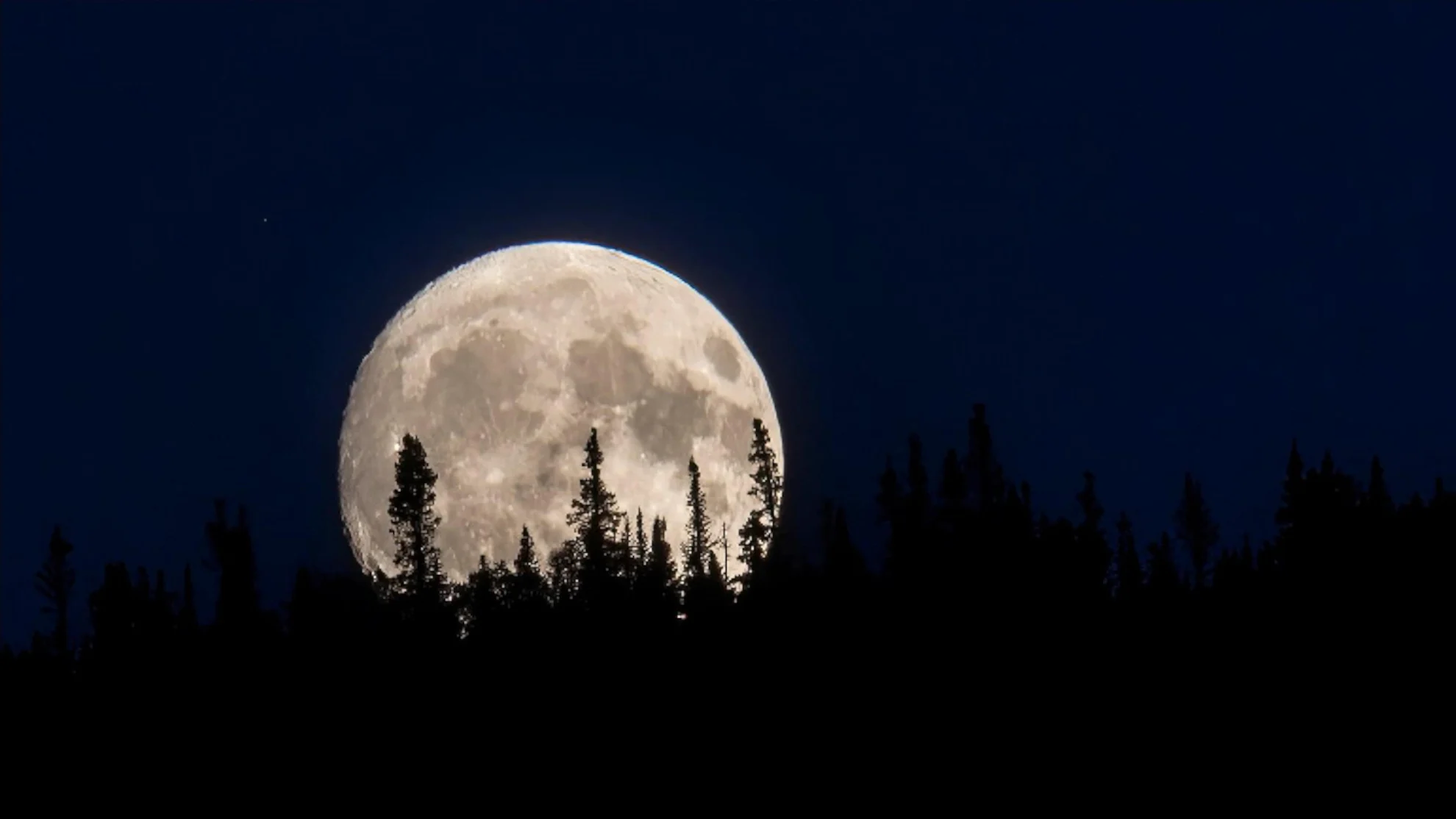
First Full Moon of Summer 2025 shines this week
When the Sun, Earth, and Moon line up in 'syzygy' Thursday night, the Full Buck Moon will shine in the sky.
Do you have reasonably clear skies during the latter half of this week? If so, take a few minutes to look towards the sky, and witness the beauty of the Full Buck Moon.
July 2025's Full Moon occurs at exactly 20:39 UTC, or 4:39 p.m. EDT, on the 10th.

This view of the Buck Moon was captured by Matt Melnyk on July 13, 2022 from Calgary, Alberta, and uploaded to The Weather Network's UGC gallery.
Don't be too focused on seeing it at that precise moment, though. The side of the Moon that perpetually faces Earth will appear full — over 99 per cent illuminated by the Sun — from after midnight on the morning of July 10, all night long from moonrise to moonset on the night of the 10th to 11th, and even as the Moon rises again on the evening of the 11th.
This is the first of three Full Moons for Summer 2025. It is also the second of four 'normal' sized Full Moons that span the season and into early Fall, following a string of 'Micromoons' in the spring, and before the upcoming trio of 'Supermoons' that will close out the year.
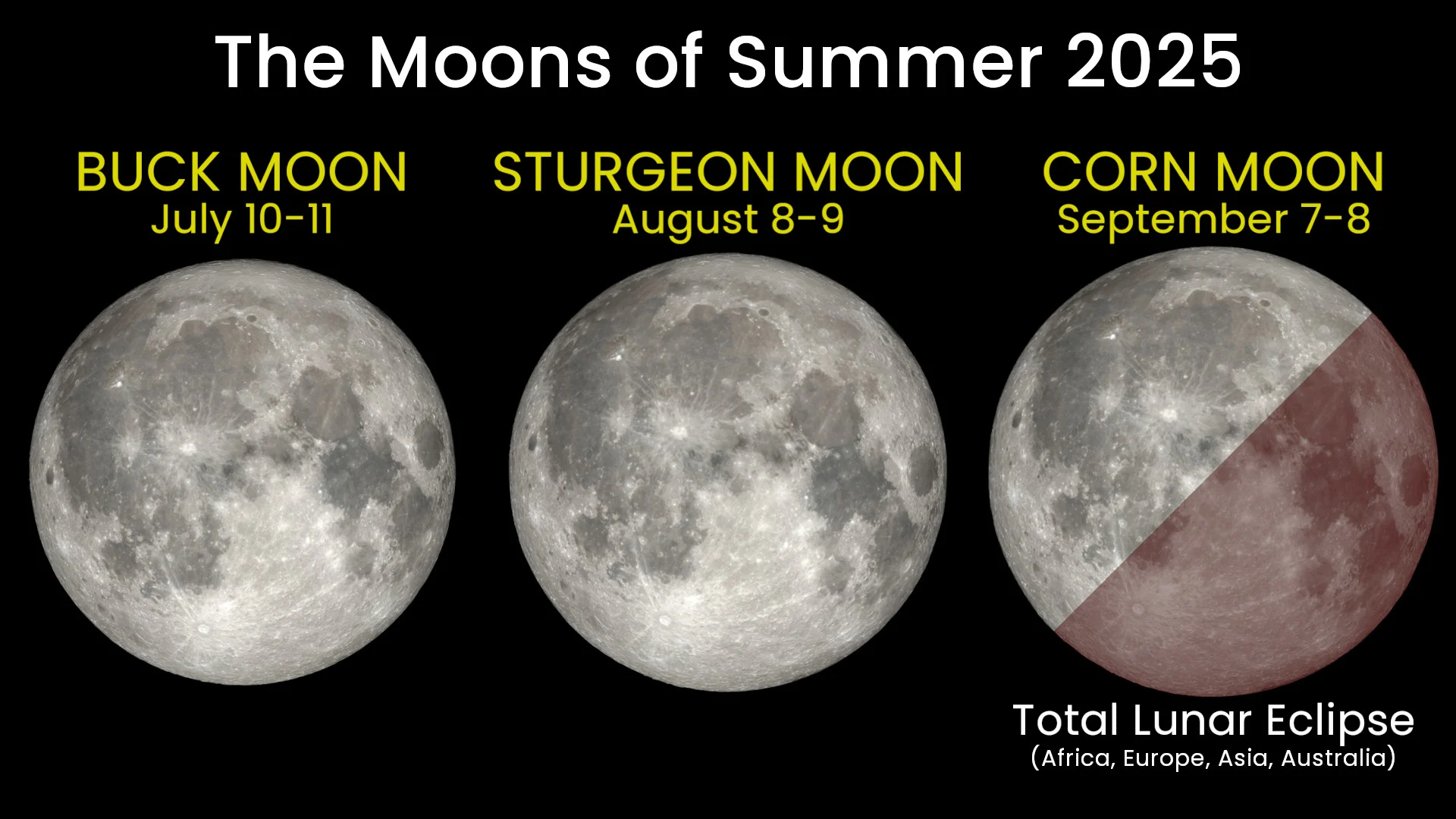
The three Full Moons of Summer 2025. Although the September 7-8 Corn Moon does produce a Total Lunar Eclipse, the event will not be directly visible from anywhere in Canada. (NASA's Scientific Visualization Studio/Scott Sutherland)
However, if you'd like to see the Moon look exceptionally big, be sure to find it in the eastern sky just after sunset, or in the western sky just before sunrise. In either case, a mysterious effect known as the Moon Illusion will make our celestial companion look huge!
READ MORE: Why does the Moon look so big? It's the mysterious Moon Illusion!
'Buck' Moon? What's that?
With the exception of the occasional Blue Moon, each Full Moon we see during the year has its own popular name. The publishers of the Old Farmer's Almanac gathered these names together in the early 20th century, inspired by Colonial and European folklore, but mostly by the indigenous peoples of what is now the northeastern United States and the Great Lakes region.
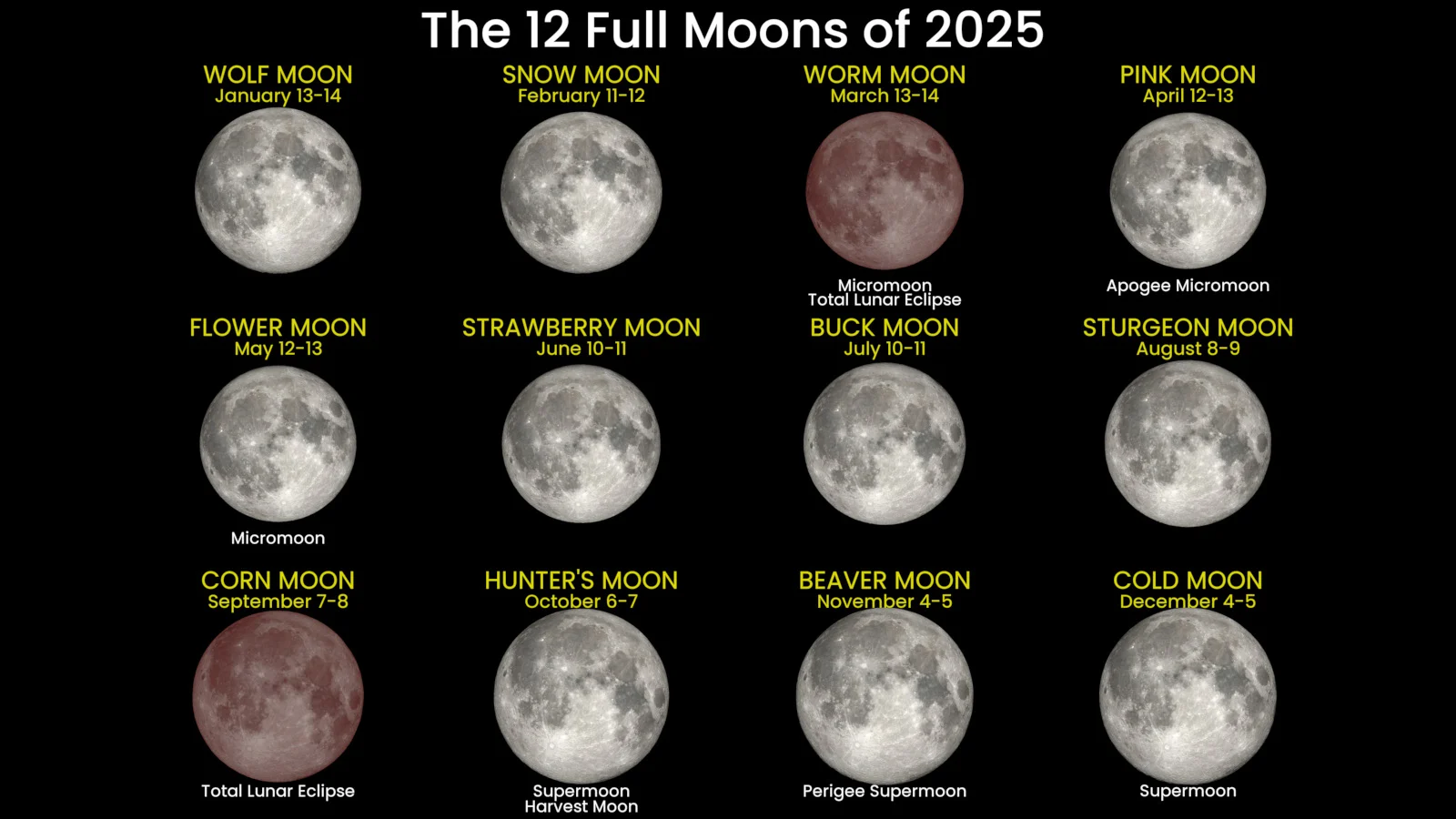
This graphic collects all the relevant data for the 12 Full Moons of 2025. (Scott Sutherland/NASA's Scientific Visualization Studio. Supermoon and Micromoon data courtesy Fred Espenak)
According to the Old Farmer's Almanac: "The full Moon in July is called the Buck Moon because the antlers of male deer (bucks) are in full-growth mode at this time. Bucks shed and regrow their antlers each year, producing a larger and more impressive set as the years go by."
Although the name is most often used just to describe this particular Full Moon, it refers to far more than just this one phase.
Like other advanced cultures around the world, the indigenous peoples of North America used a sophisticated lunar calendar to track time. For example, the Anishinaabe visualized their calendar using the pattern of plates on the shell of a turtle. The 28 small plates around the shell's edge corresponded to the days of each lunar cycle, and the 13 large plates on the turtle's back were the 13 lunar months of the year.
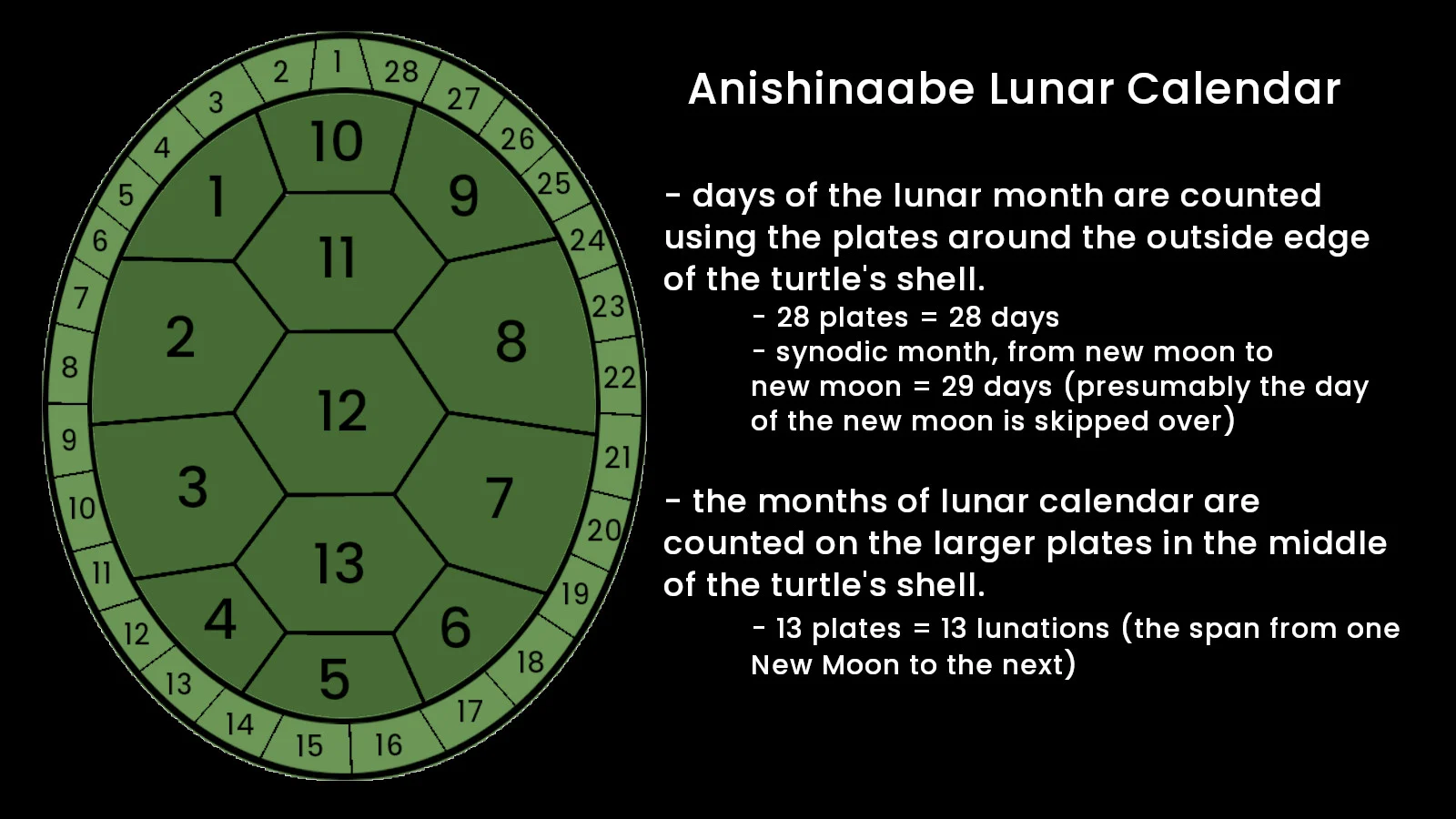
DON'T MISS: Look up! What's going on in the July night sky?
Each of the 13 moons was given a name, similar to the months of the Gregorian calendar. However, whereas the names of the Gregorian months came from gods, rulers, and their numerical order in the calendar, indigenous names for the moons were taken from the aspect of nature that affected the peoples' lives at that time of year.
Coincidentally, the Buck Moon most often lines up with the month of July in the Gregorian calendar. As shown below, though, it does not usually match up perfectly with the calendar month.
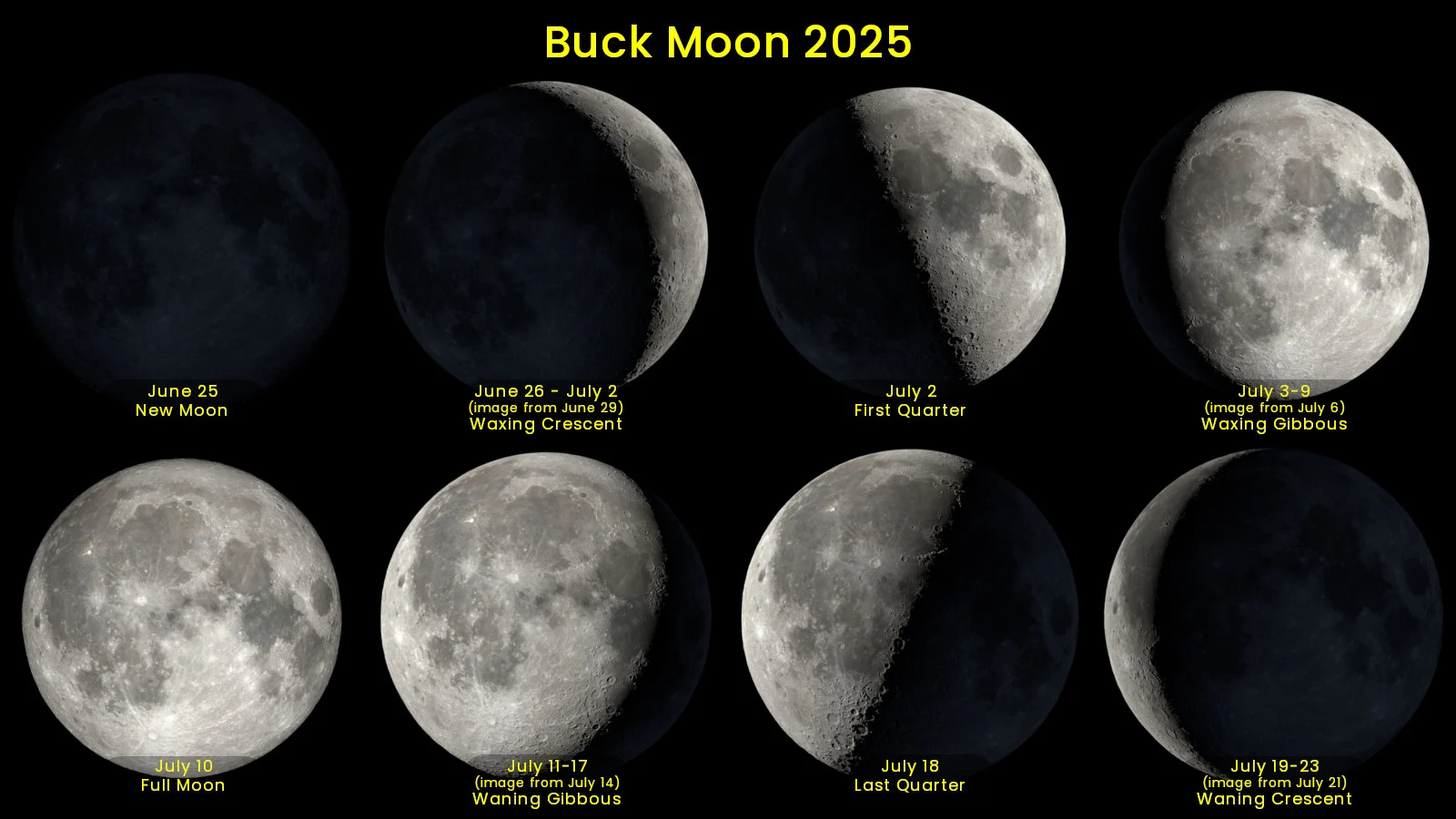
The phases of the Buck Moon in 2025, from the June 25 New Moon through the July 23 Waning Crescent Moon. (NASA's Scientific Visualization Studio/Scott Sutherland)
(Thumbnail image shows the Full Buck Moon on June 30, 2024, taken by Lisa O'Driscoll from Deer Lake, Newfoundland.)
